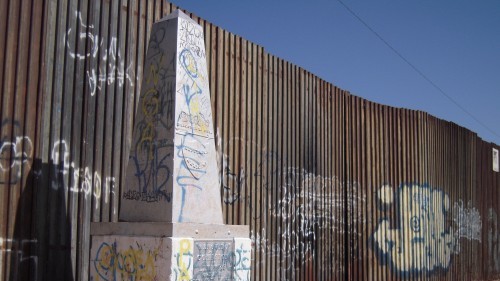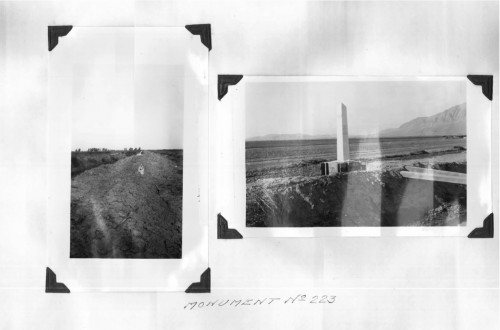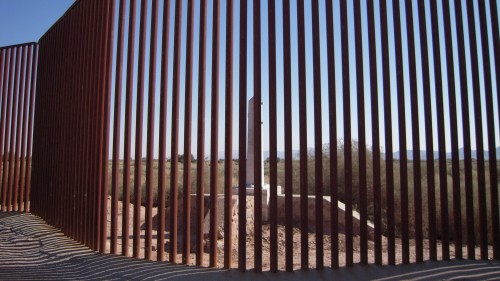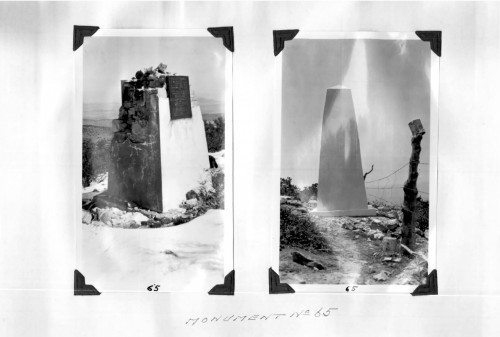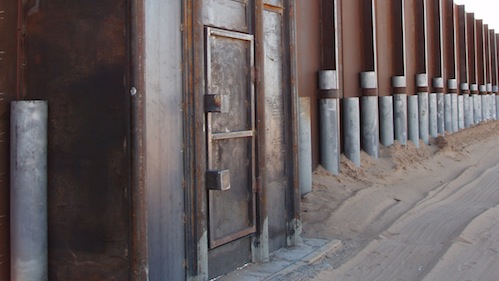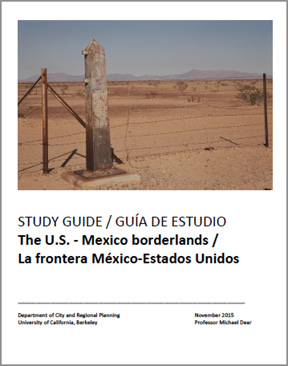Save the Monuments
The boundary markers between the U.S. and Mexico are the most important manifestations of the past, present and future of the two nations.
In the years that followed the end of the 1846-48 war between the two nations, the markers were sometimes destroyed by Indians, used by settlers as building materials, or simply shifted by people who saw resources they desired on the other side of the line.
Today, human abuse most threatens the monuments. They have been deliberately toppled, plastered by graffiti, buried by construction of irrigation channels, and even stolen!
The 258 official boundary monuments and the hundreds of smaller markers are remarkably varied in style and location. They stand like silent sentinels commemorating past conflicts, but also symbolizing the connections and friendships that have developed between peoples on both sides of the line. They deserve our support not simply as part of our national memories, but also as a promise of our collaborative futures together.
Gallery of Monuments
About Save the Monuments
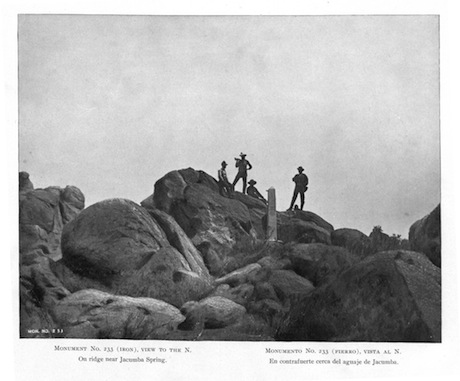
Image courtesy of the University of North Texas Digital Library.
The boundary markers are the most important manifestations of the past, present and future of the two nations. In the years that followed the end of the 1846-48 war between the two nations, the markers were sometimes destroyed by Indians, used by settlers as building materials, or simply shifted by people who saw resources they desired on the other side of the line. With the passage of time, many monuments became damaged by weather or lightning strikes, and destabilized when their foundations were eroded by natural forces. Today, human abuse most threatens the monuments. They have been deliberately toppled, plastered by graffiti, buried by construction of irrigation channels, and even stolen!
The 258 official boundary monuments and the hundreds of smaller markers are remarkably varied in style and location. They stand like silent sentinels commemorating past conflicts, but also symbolizing the connections and friendships that have developed between peoples on both sides of the line.
They deserve our support not simply as part of our national memories, but also as a promise of our collaborative futures together.
How You Can Help
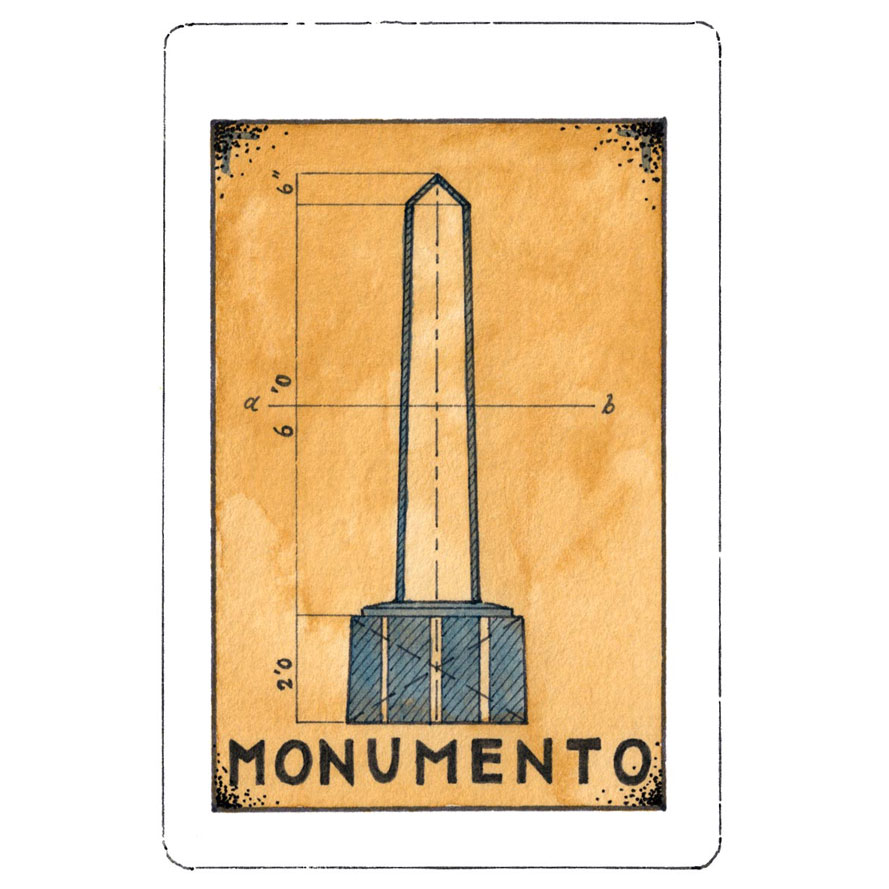
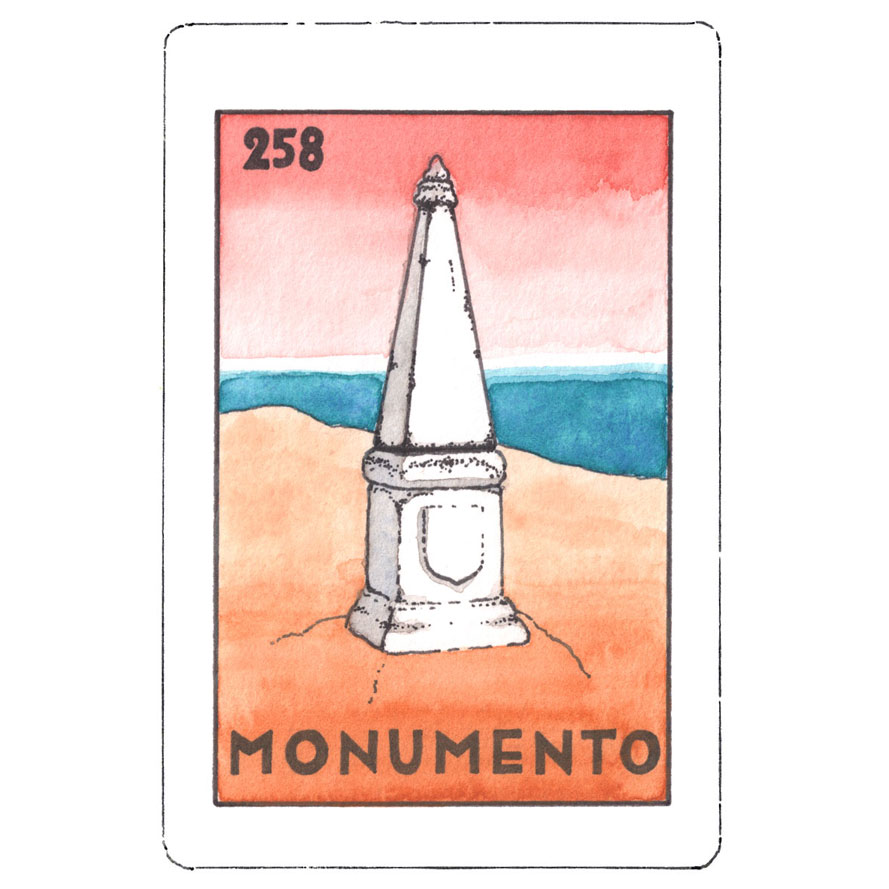
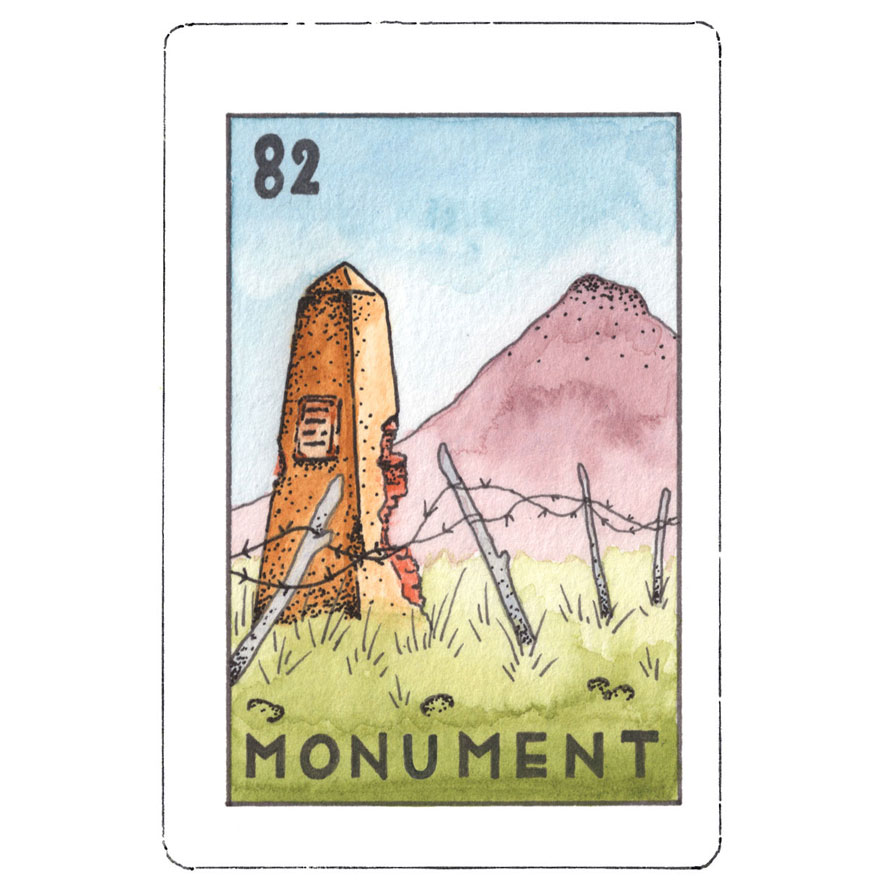

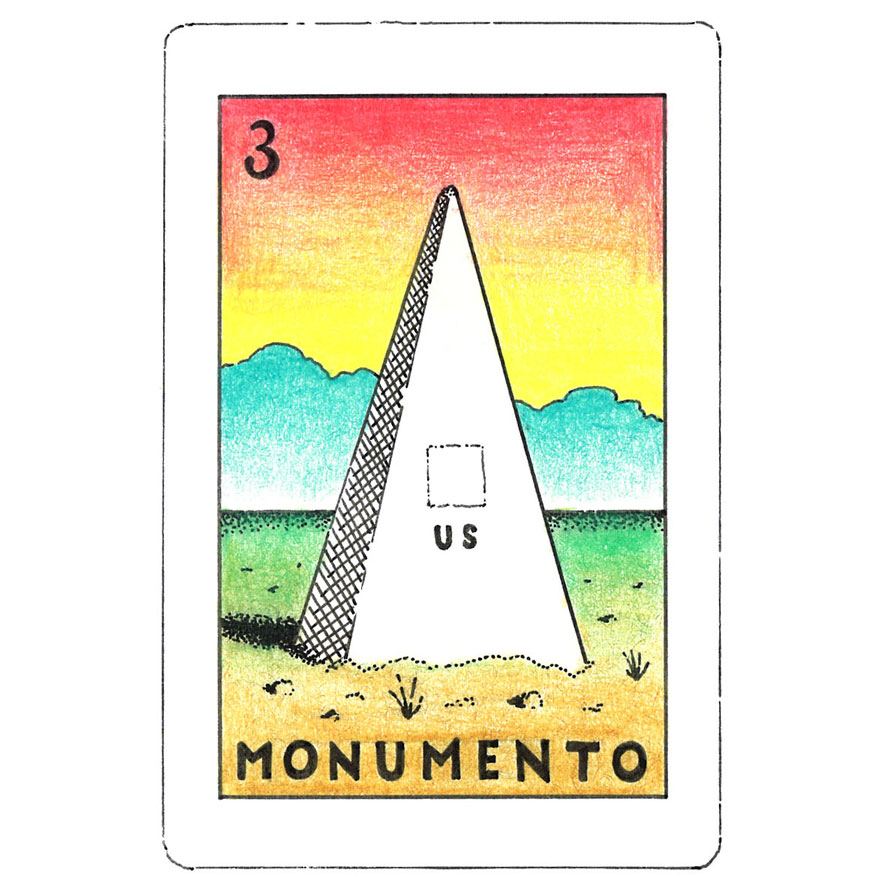

Adopting a Monument: The Possibilities
These are some of the ways we can support the monuments. If you have any ideas to contribute, or would like to share your experience with the monuments, contact us.
Adoption by schools on the borderline
- Collaborative art project involving local artists and school children
- mural honoring monuments
- ceramic project—sculpting mini-monuments, putting them in classrooms
- poster projects envisioning the future of border/monuments a la Norma Iglesias
- Class reports on monument/surveys history/geography
- Pen-pal project for students in cities that share a monument
- Classroom pen-pals—did you know about the monument? What are your thoughts on it? Expand discussion into ideas of binational identities/neighbors
Adoption by local businesses
- Donate money for monument maintenance
- Display plaques/posters of nearby monument(s) in office/shop
Adoption by local government
- Getting the govt. on board to support the efforts of people who want to clean/paint/protect monuments
- Plaques that say: “10 miles north of this point, Monument No. X resides at the peak of…” – weaving the monuments into the fabric of everyday life
Adopting the monuments not in a monetary sense but in a way that aims to incorporates them into our collective consciousness
- Reclaiming the monuments, making them culturally relevant, creating a sense of ownership of the objects
Collecting photos/postcards of monuments from local archives/libraries
Creating Save The Monuments chapters/collectives in different cities
- Those who feel passionate about the monuments/live in close proximity to them can volunteer to document them in their current states (photos, drawings, paintings), clean up surrounding debris, re-paint them (govt. permission?)
Creating a Save the Monuments website with historical guide, images and “how to join the movement” information.
Leaving “offerings” at monument sites, honoring their significance (ie wreathes of flowers, small stones) – too much like a cemetery?
Having communities build monument replicas to put in storefronts, schools, etc.
Encouraging people living in monument towns to organize bi-national events around monuments (ie yoga sessions, concerts, religious gatherings, poetry slams, movie screenings).
Write/perform corridos about the monuments / border life
Encourage people to submit their own corridos and display them on website
Why Walls Won’t Work Study Guide
This Study Guide covers the history, present and future of the US-Mexico borderlands, with special emphasis on the growth of the ‘third nation’ between Mexico and the U.S. Both Mexican and U.S. perspectives are considered.
The Guide is organized in eleven chapters, following the book by Michael Dear, Why Walls Won’t Work: Repairing the US-Mexico Divide.
Explore the border
Explore the U.S.-Mexico boundary line with this virtual tour of the borderlands, created by UC Berkeley alumni Claire Evans using Google Earth technology.



